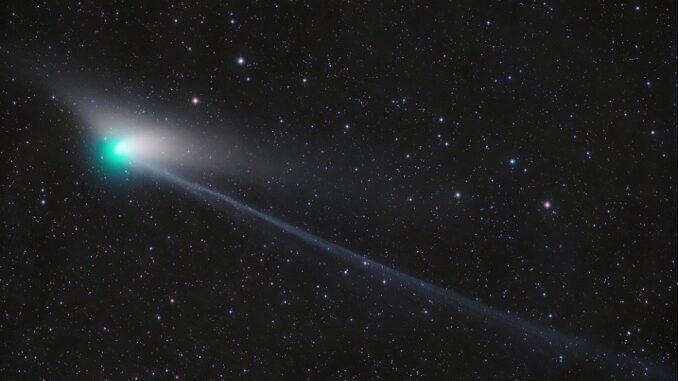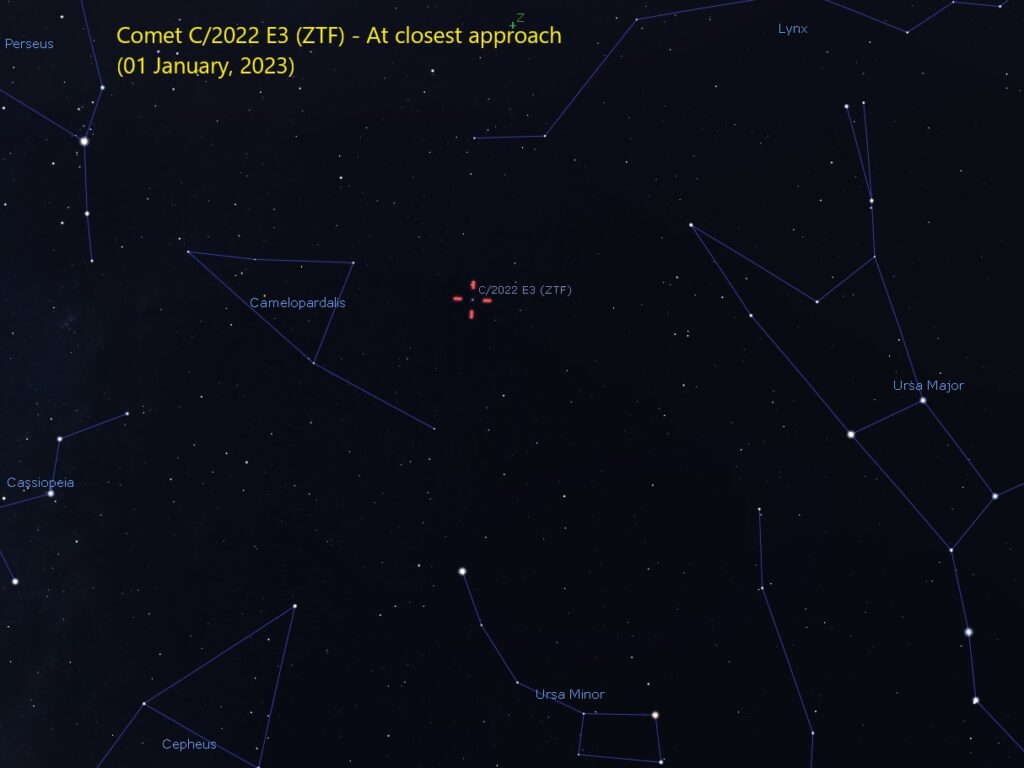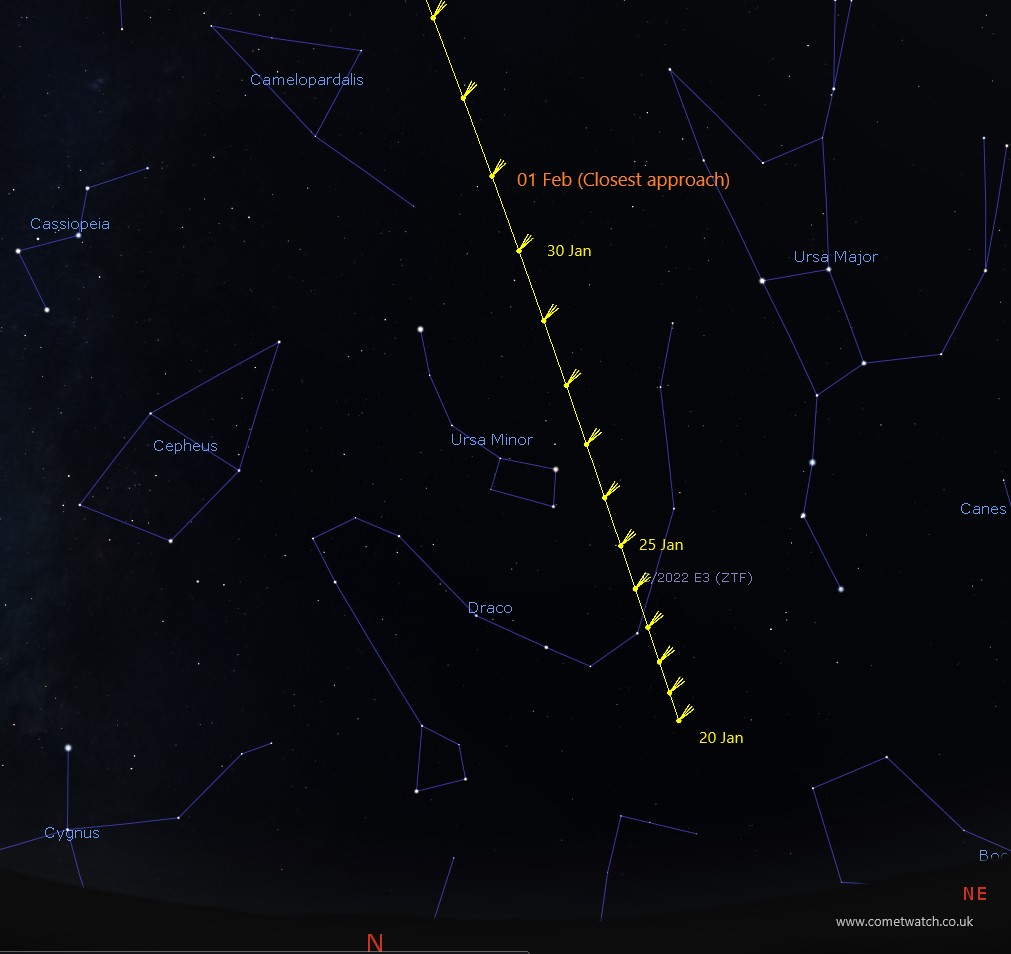
Many observers have struggled to see comet ZTF with the naked eye. Others have reported a disappointing ‘smudge’ even in binoculars. However with astrophotography, this comet comes alive boasting a wonderful long, sweeping tail.
The excellent example above was taken by Austrian amateur astronomer and astrophotographer Michael Jäger on 20th January.
C/2022 E3 has now climbed out of the constellation of Corona Borealis in to Draco and headed for Ursa Minor. This now means that the green ball of ice and dust is circumpolar for most northern latitudes (meaning it never sets and is visible all night).
When does comet ZTF reach closest approach to Earth?
C/2022 E3 reaches closest approach to Earth on February 1, 2023 at a distance of 27 million miles. Located between the constellations of Camelopardalis and Lynx, the comet will be positioned nice and high in the sky through the night.

At this point in its journey, the object will be moving at quite a pace (from a photography point-of-view). This doesn’t mean it will be visually ‘streaking across the sky’ as many news outlets describe it.
To look at, the comet wont appear to be moving at all but against the background stars, the comet will be moving steadily as the minutes go by. This makes imaging particularly challenging during closest approach.
How bright will comet ZTF get?
At the time of writing, most observations put C/2022 E3 (ZTF) at around magnitude 5.4. This places the comet within the reach of naked eye observation in a dark sky location.
Most models predict a peak brightness around magnitude 5 unless something unexpected happens in the next few days. As with all comets, nothing can be ruled out, however were not expecting another show like comet Neowise in 2020.
One hindrance however will undoubtedly be the 11-day old Moon. This will drastically affect both observing and photographic opportunities. The Moon’s light will wash out the contrast of the sky. In particular the much fainter tail will be most affected by this.
In short, now is the best time to observe comet ZTF while the Moon phase is still at a relatively young age. Even now, it is a constant battle between comet altitude and Moon rising/brightness.
Where is Comet C/2022 E3 (ZTF) right now?
The comet is now visible all night in the northern sky. The later in the night you look, the higher up in the sky the comet will be. The stars of the Plough and Ursa Minor will come in handy for locating the comet. In particular the two ‘end’ stars of Ursa Minor (Kochab and Pherkad) on the nights of 26 and 27 January.
Use these finder charts to locate the comet from your location and date. A the time of writing the comet is headed in to the constellation of Draco

